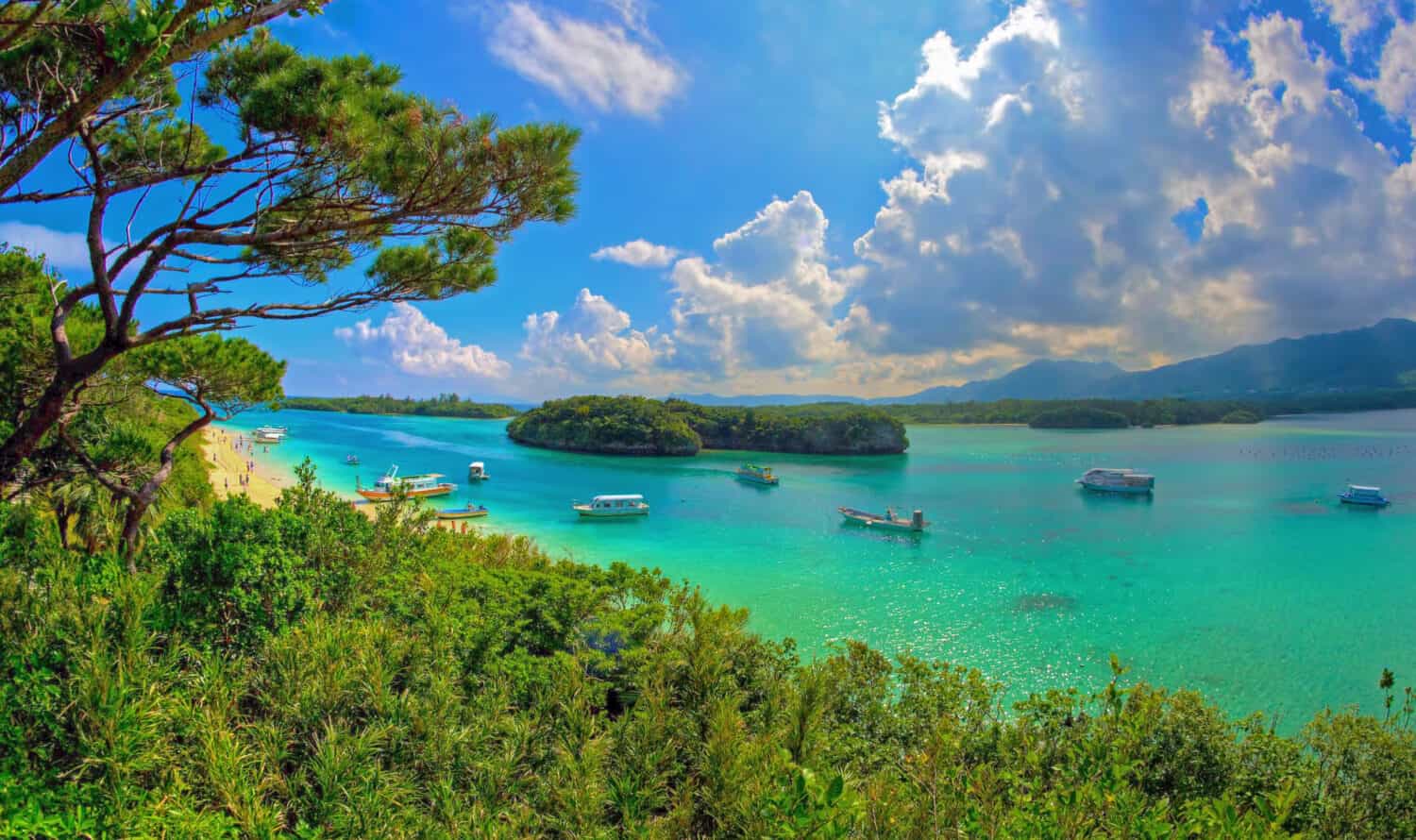Summer in Japan is known for fireworks, festivals, and flower gardens. But that’s not all. August is the last month of summer on the islands. Japanese schools have summer vacation until the end of the month, and it’s a peak travel time for visitors coming to Japan. The heat and humidity of August can be a shock at first, but there are plenty of pleasantly warm days in between too. Whether you’re planning a trip or want to learn more about the unique islands of Japan, this comprehensive guide on the August weather in Japan will cover the average temperatures, the hottest day on record, daily rain chances, and more.
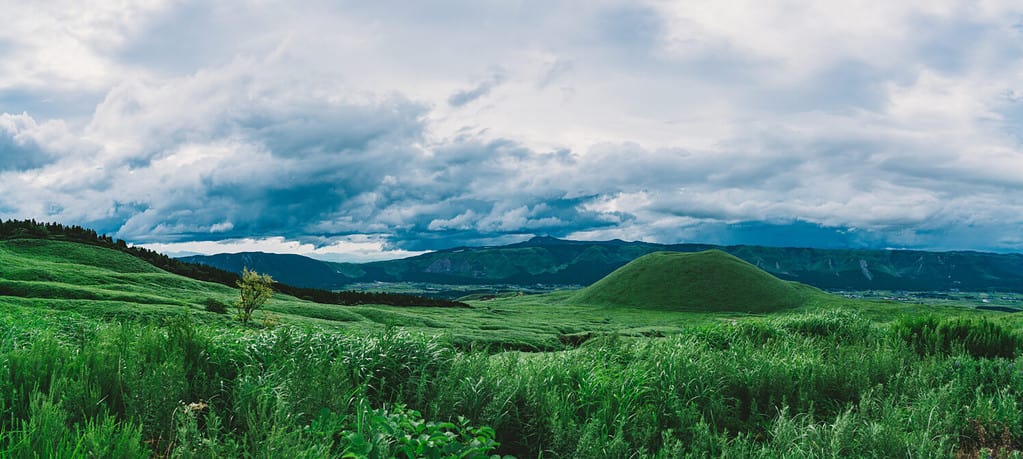
August in Japan is hot and humid.
©Phiradit Worawitphinyo/Shutterstock.com
Average August Weather in Japan
August is the hottest and most humid month of the year in Japan. But that doesn’t stop anyone from going outside. Residents and visitors spend the summer months lounging on the beaches, exploring the Japanese Alps, and participating in festivals.
Learn more about the average August weather in Japan below to prepare for a warm summer in Japan.
Temperature
Summer temperatures have risen in Japan over the last few years. The clear sunny skies, in combination with a high average humidity, keep temperatures around 80-90 degrees Fahrenheit. Daily temperatures peak at about 88 degrees Fahrenheit and the coolest places are in northern Japan or the Japanese Alps. Average temperatures during the month rarely fall below 69 degrees Fahrenheit or rise above 93 degrees Fahrenheit.
August weather in Japan is relatively predictable, but there are occasional outliers.
Sea Temperature
The average sea temperature in August is 78 degrees Fahrenheit. The minimum sea temperatures range from 76-80 degrees Fahrenheit, with maximum sea temperatures ranging from 81-88 Fahrenheit. However, the exact temperatures vary according to the location.
Abashiri, located on the northeastern coast of Hokkaido, has an average sea temperature of 63 degrees Fahrenheit, with a minimum of 59 degrees and a maximum of 68 degrees. The city is best known for the drift ice in the Sea of Okhotsk, so the water is much colder, even on the hottest summer day.
Wind Patterns
In addition to hot and sticky summer weather, Japan can be pretty windy in August. Hourly wind speeds are constant in August, with average speeds ranging from just above 0 miles per hour to over 7 miles per hour. In Tokyo, the winds typically come from the south.
Cloud Cover and Sunshine
Summer is over at the end of August, so the cloud cover gradually decreases through the month. Since August is peak typhoon season, the sky is cloudy or overcast around 50-57% of the time. However, the sky is typically the clearest toward the end of the month, with the conditions being clear, mostly clear, or partly cloudy about 49% of the time.
Throughout August, the days gradually get shorter. By the end of the month, the length of daylight has decreased by 58 minutes. The longest day in August is August 1, with just under 14 hours of daylight, whereas the shortest day of August in Japan is August 31, with just under 13 hours of daylight. from here, days continue to get shorter through the winter months.
Humidity
High humidity levels in August are standard. In fact, average humidity levels range from 78% to 83% relative humidity during peak summer. Early August is often the most humid month, with humidity slowly falling as temperatures lower in September.
Precipitation
A wet day in Japan has at least 0.04 inches of precipitation, whether it’s rain, sleet, or snow. But in August, the only precipitation Japan experiences is rain, even in the northernmost regions. The chances of a wet day in August steadily increase as it gets later into typhoon season, starting from 35% at the beginning of the month and then ending with a 39% daily chance of precipitation.
Rainfall
The average rainfall for Japan in August is 6 inches but southern parts of the country, such as Okinawa, expect up to 10 inches of rain. Due to daily high humidity, it’s not uncommon for intense and unpredictable bursts of rainfall. Therefore, many people carry an umbrella.
If you get caught outside in the rain without one, some cities in Japan provide umbrella vending machines or loaner umbrella stations in areas of high foot traffic, including train stations and city halls. Despite the sporadic rain and winds, there are still many pleasant days throughout the month.
Natural Disasters
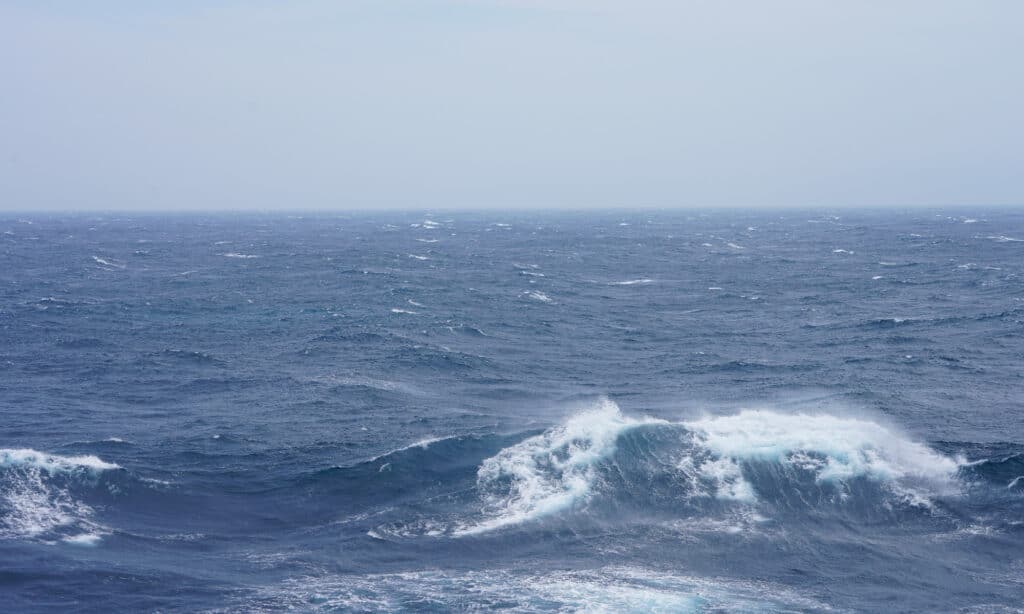
Typhoons are common during summer.
©Artem Pachkovskyi/Shutterstock.com
Typhoons
Typhoon season runs from July to October, but the peak season is from August to September.
Typhoons are similar to hurricanes as they are both tropical cyclones. The only difference is the location of the storm. Typhoons commonly hover above the oceans surrounding Japan and then make landfall bringing along hazardous winds and torrential rain that can last hours up to a day, impacting August weather in Japan.
Japan experiences a handful of typhoons annually, with only a few making landfall. Okinawa in southern Japan may experience up to eight typhoons during the season, whereas the mainland may only experience one or two. Areas with a low latitude are more likely to be hit by a typhoon, but any part of Japan is at risk during typhoon season.
Most importantly, Japan has extensive safety precautions to keep residents and travelers alike safe in the event of a natural disaster. And luckily, typhoons tend to move slowly, making them easier to predict.
Earthquakes
Japan is the most seismically active country in the world. In fact, Japan experiences an estimated 1,500 earthquakes every year. However, most have a low magnitude rating, so they go unnoticed.
Rather than using the Richter Scale, Japan uses its own seismic intensity scale, the Shindo scale. The Japan Meteorological Agency created this 10-step scale to measure the shaking of an earthquake. So instead of measuring the intensity of an earthquake like the Richter scale, the Shindo scale reports what people can feel during an earthquake.
Earthquakes occur frequently throughout Japan, but the Sanriku area and prefectures along the Sea of Japan coast are the most prone to seismic activity.
Flooding
Heavy rains during peak typhoon season are expected, sometimes leading to flooding and landslides. Rising temperatures in the last few years are responsible for hotter summers and a significant rise in heavy rain. Cities in mountainous areas are the most vulnerable to flood damage because homes are commonly built on the plains at the bottom of hillsides. Typhoons, tropical storms, and torrential downpours can be deadly, which is why individuals in affected areas are often ordered to evacuate.
Record Temperatures in Japan
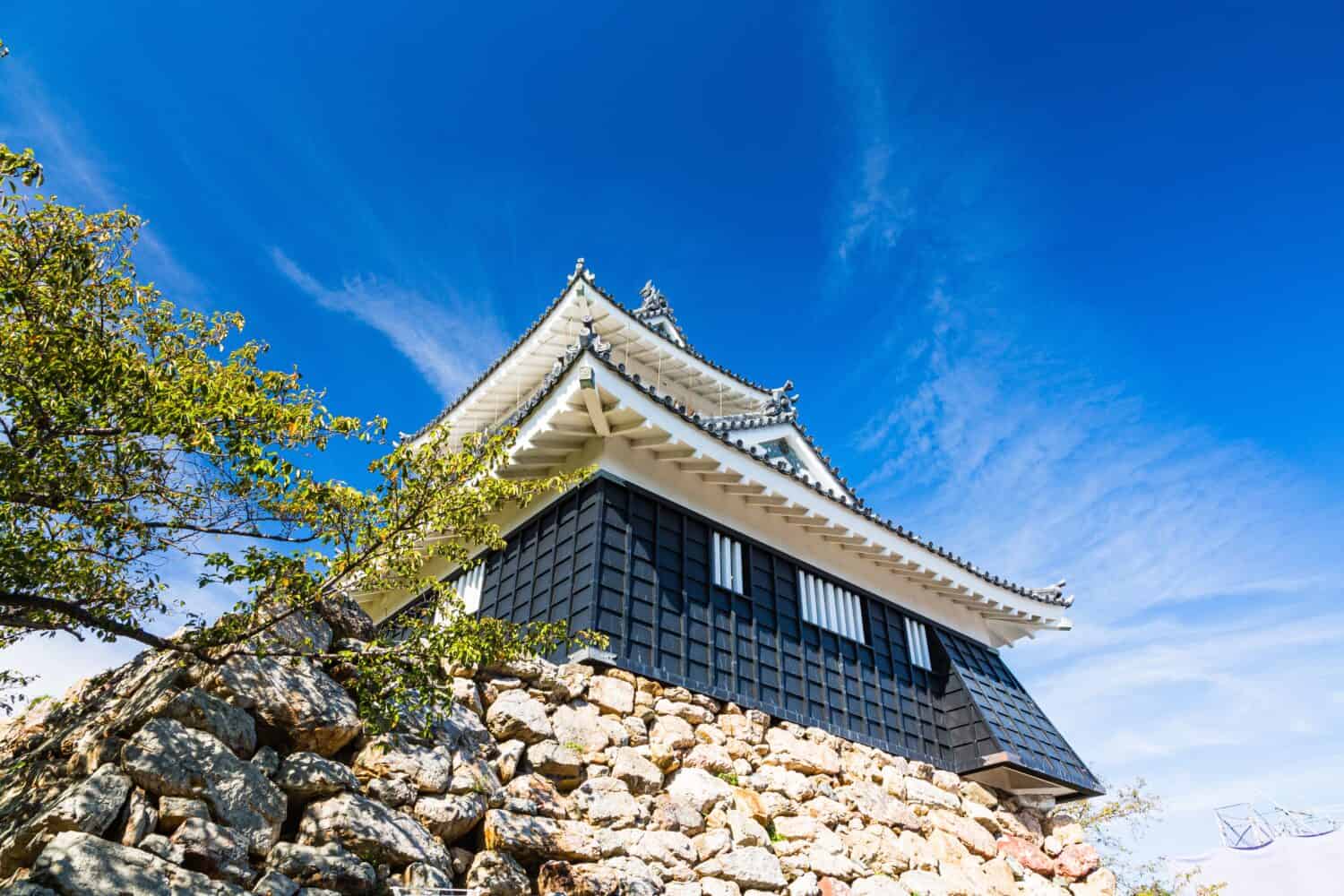
Hamamatsu holds the record for the hottest day in August.
©Kyohei Miyazaki/Shutterstock.com
Hottest Temperature on Record
One of the hottest days on record for August in Japan occurred in Hamamatsu on August 17, 2021. Hamamatsu is a coastal city of the western Shizuoka Prefecture in Honshu. The temperature was 106 degrees Fahrenheit.
Not only was this the hottest temperature recorded in the city, it also matched the highest temperature ever recorded in the country’s history, which was first reached in 2018 in Kumagaya, located near Tokyo. The blistering heat wave was part of a string of record-breaking temperatures all over the country for over a week.
According to the Japan Meteorological Agency, the 106-degree heat wave was 12 degrees higher than the average summer temperatures. Temperatures increased to the highest level since the 1898 record, indicating future record-breaking summer temperatures, thus impacting the average August weather in Japan.
Coldest Temperature on Record
The coldest day on record for August in Japan took place in Wakkanai on August 12, 2021. Wakkanai is the capital of Sōya Subprefecture in Hokkaido. On this day, the temperature dropped 51 degrees to a low of 37.7 degrees Fahrenheit.
The unexpected cold snap became the lowest recorded August temperature in 128 years. What’s more, it was part of a weeks-long extreme weather pattern to hit Japan, including heat waves and flooding. The air was so cold residents were able to see their breath outside.
The week before, temperatures in Tokyo climbed to 104 degrees Fahrenheit, putting Olympic athletes at risk of heat-related illness. Therefore, the staggering drop in temperature came as a shock.
Popular Events in August
August weather in Japan is hot and humid, but it’s also summer vacation. That means it’s peak travel time. People spend a lot of time outdoors during the summer in Japan. And what makes this time of year so special are the annual festivals held all over the country.
Below are two of the most famous and highly anticipated August festivals in Japan.
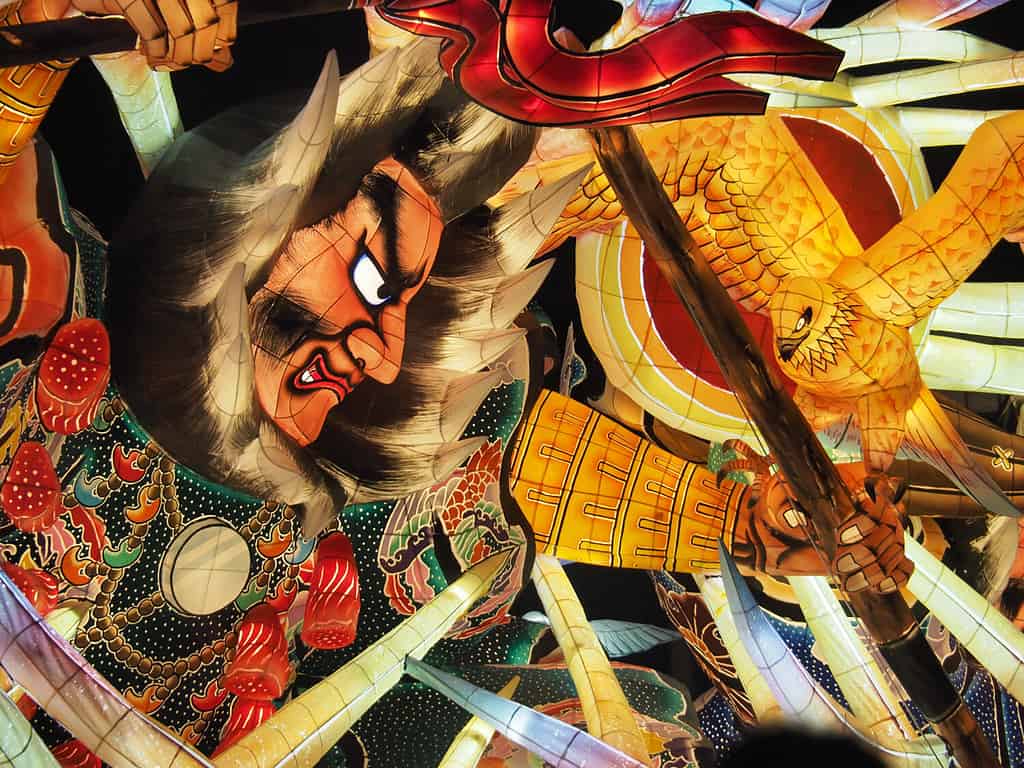
The Aomori Nebuta Festival is one of the three largest festivals in the Tōhoku region.
©MoominHippo/Shutterstock.com
Aomori Nebuta Festival
The Aomori Nebuta Festival is a Japanese fire festival held from August 2-7 in Aomori City. Over 3 million people from all over the country and abroad gather to celebrate every year. Over 20 nebuta, or massive lantern floats created to resemble kabuki and other mythical stories, parade through the city. On the seventh day, dancers and musicians ride on boats as a vast fireworks display lights up the night sky to conclude the festival.
The Aomori Nebuta Festival is the most famous event celebrated during Sandai Matsuri week, where three great festivals take place in three prefectures in the Tōhoku region.
The Obon Festival
The Obon Festival, or Bon Festival, lasts from August 13-16. However, in some regions of Japan, it is celebrated in mid-July. It’s one of the most significant traditional events in the country, alongside New Year’s. The holiday is a particular time for families to gather and reconnect with the spirits of their loved ones who have passed.
A small fire, known as a muke-bi or welcoming flame, is lit outside the home to welcome the spirits of the deceased back home. When the festival ends, the spirits return with another fire known as an our-bi. However, some regions of Japan release small lanterns down the river or into the sea instead.
The most significant part of the Obon Festival is the Bon Odori when people dance together in a circle at parks or shrines to recorded music. One of the most famous is the Awa Odori.
This part of the month is the busiest and most expensive time to travel to Japan.
How to Enjoy the August Weather in Japan
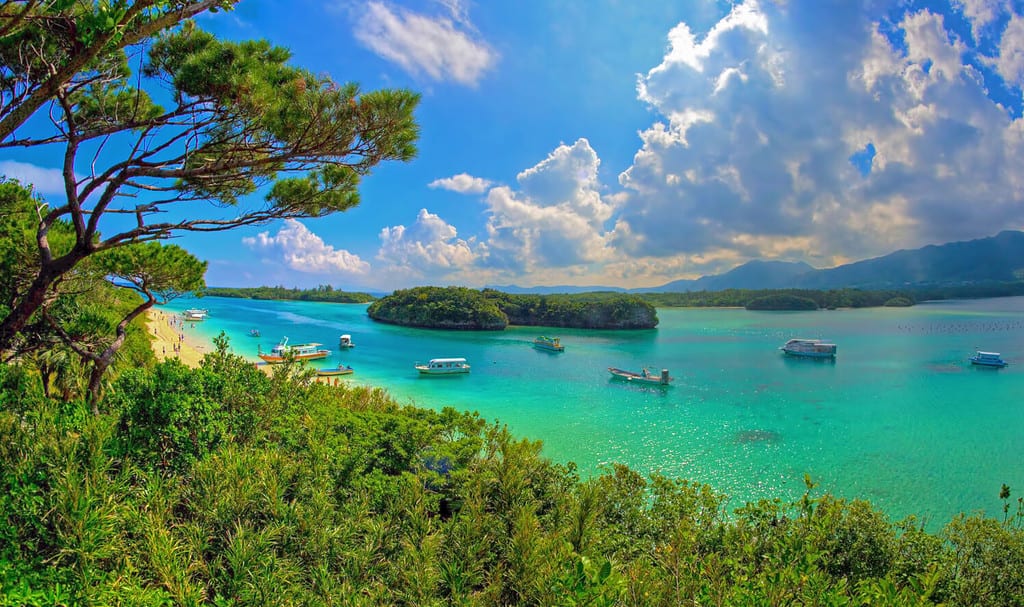
The sandy beach of Kabira Bay in Iriomote-Ishigaki National Park attracts many summer visitors.
©Dominique Bonnet/Shutterstock.com
Although August weather in Japan is primarily hot and humid, wearing light clothes and packing an umbrella can make exploring different cities enjoyable. August is a popular time to visit Japan, and many schools are out for the summer, so most public spaces are busy throughout the month.
As with the other seasons, temperatures vary by region. Sun lovers can enjoy the white sandy beaches or botanical gardens in Okinawa. At the same time, those who want cooler temperatures can escape the heat to the cool flower fields and museums in Hokkaido. No matter where you go, there are activities for everyone to enjoy.
Thank you for reading! Have some feedback for us? Contact the AZ Animals editorial team.

